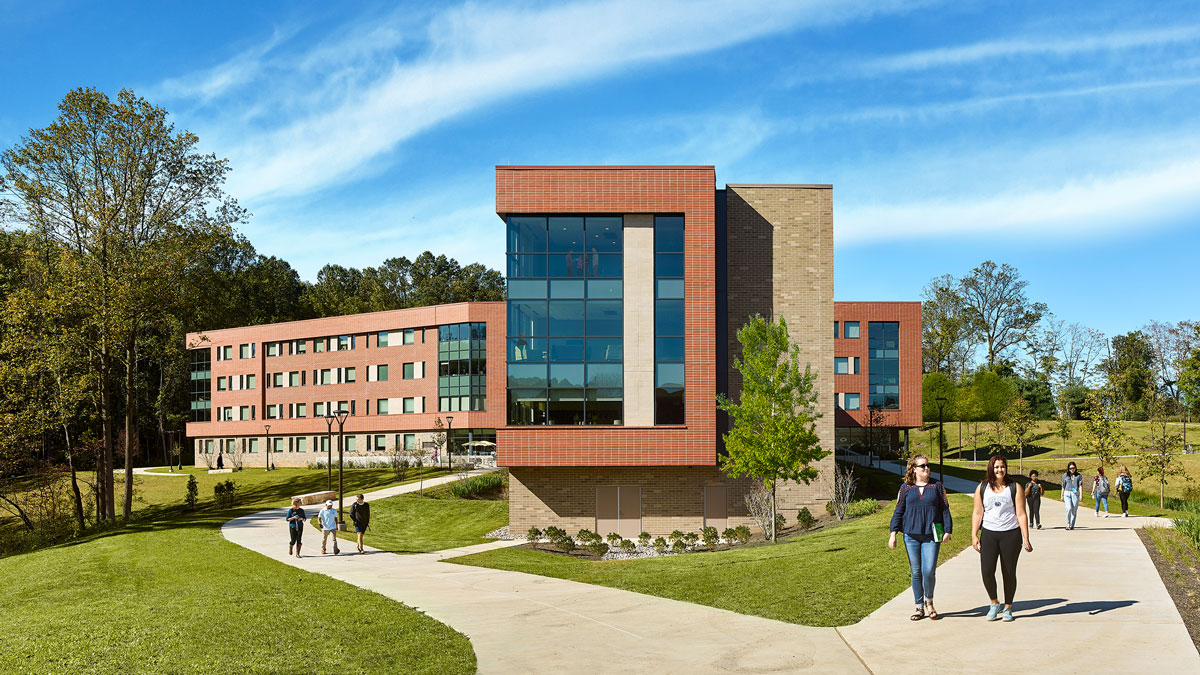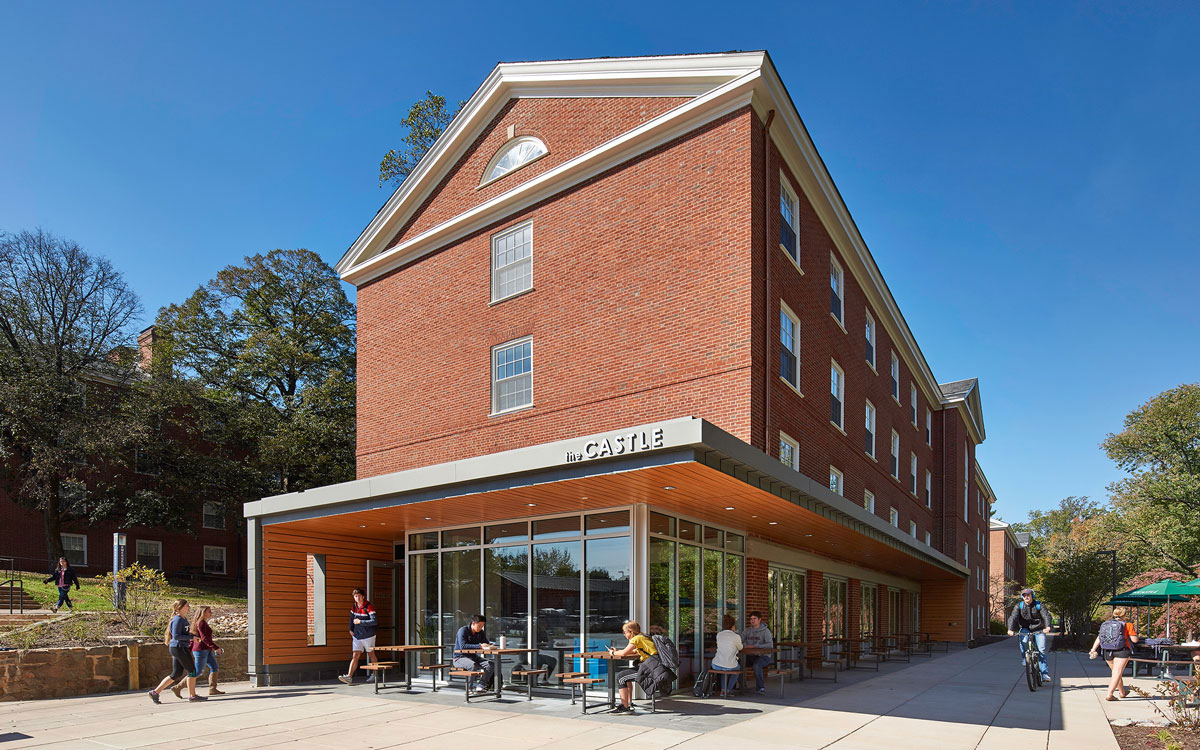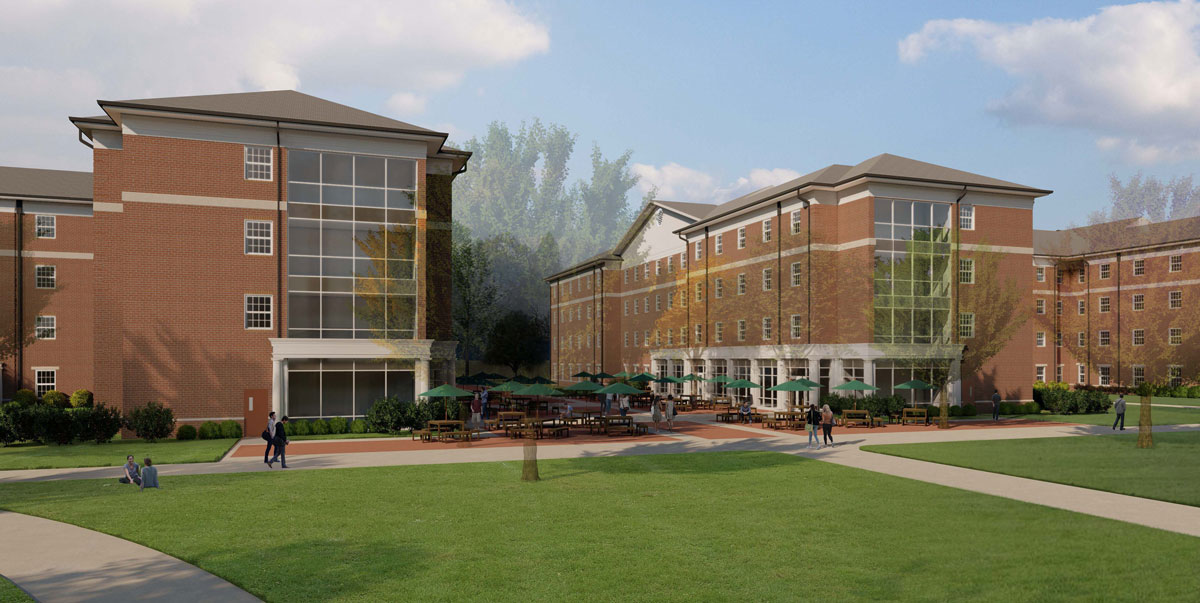5 Questions with an Expert: Peter Aranyi Talks Student Housing

I sat down with Clark Nexsen’s Student Life practice leader, Peter Aranyi, to talk about how COVID-19 has impacted the student housing market and to discuss the issues that are top of mind for our higher education clients as we emerge from the pandemic.
w
1. What are our clients talking or asking about most right now?
w
Student housing has been very impacted by the pandemic, so there is a lot of conversation around what this experience has been like and what’s ahead. While colleges and universities are in session for education, many students opted for remote learning, which means a lot of residence halls aren’t full, and schools are feeling that loss of income. Many schools we work with – Clemson and UNC Wilmington are just two examples – designated one residence hall on campus as a “sick hall” for students who are diagnosed with COVID-19.
Having said that, I’m hearing a lot of positivity for next year and years after as we move out of the pandemic. We’re seeing quite a few design RFPs coming out, which reinforces that sense of enthusiasm. There is significant pent-up demand for new student housing, and our clients realize that the completion of new facilities is still a couple of years away after design kick-off, so now is the time to get started.
2. What are the major trends impacting student housing?
w
In the big picture, a major trend is the focus on building new student housing for first- and second-year students. For a long time, we were designing apartments and suites to appeal to upperclassmen, but in recent years the need has shifted to developing residence halls that attract incoming students.
There is also an increased emphasis on allotting space and funds for commons spaces. Student rooms are getting smaller, and commons are becoming larger and more specialized. Maker spaces, classrooms, and collaborative spaces are all examples of how residential colleges and the idea of living-learning is much more mainstream now. These spaces are being designed with flexibility in mind, enabling them to be used more frequently and for different functions so schools get the most out of their investment. Quick food service like coffee shops, gelato stands, and convenience stores with a prepared food option are also increasingly popular.

The renovation of the McCormick Road Houses at UVA included the transformation of “The Castle,” a dining and social space along the main pathway to campus. By opening the exterior walls, The Castle and its surrounding plaza have become a vibrant hub of activity. Photo: Mark Herboth.
Capturing outdoor space as an amenity is also a priority. The goal is to draw students to social space outside, with pedestrian streetscapes, a variety of seating types, and easy access to the coffee shops and quick food service I mentioned. These spaces create outdoor rooms that, when carefully planned, enhance the overall student experience on campus.
And, the ‘spa bathroom’ concept, which was a new idea when we originally did it for Penn State on South Halls, is now a common feature in most of our designs. All of these elements align with goals for supporting the social experience for underclassmen.
3. What do you think the COVID-19 pandemic’s impact on student housing design is likely to be, in the immediate future and longer term?
w
I do think there will be impacts, but perhaps not as large-scale as we might have thought in the early days. For example, the RFPs we’re seeing are still calling for double occupancy rooms for freshmen and sophomores – the economics of building means schools can’t afford a single room for every student. We are developing ideas for increased privacy even in a shared room through elements like partial walls, but as construction prices escalate, cost will continue to impact design decisions.
I do think certain changes are here to stay, in the sense that touchless technology in particular will become much more common. Touchless faucets, electric sensor hand dryers, possibly touchless doors, etc. will become the norm.
One of the pandemic’s main impacts today is the escalation in construction costs. It’s not the sole reason for rising costs, but the impact on raw materials, manufacturing, and logistics is a contributing factor. Another issue is the pent-up demand for new or renovated facilities, which is causing a labor shortage on top of the rising material costs. These factors are impacting what schools can afford to build. There is no doubt in my mind that costs will continue to rise over the next couple of years.
4. What is the most innovative thing you’ve seen come to the market in the last two years?
w
For student life, it has to be the integration of data into all facets of daily life. It’s well beyond Wi-Fi and gaming. For example, electronic systems are now used to deal with touchless deliveries, whether it be food, groceries, or Amazon. Virtual classroom and collaboration environments have exploded this past year and the ability to Zoom anytime and virtually anywhere has really changed the daily lives of the students and faculty.
5. Can you share a recent project and its immediate impact for students or the university?
w
It’s hard to pick just one. New construction, I’d have to say our new project at UNC Wilmington. The first phase opened last fall and the next phase will open this fall. It’s transforming that entire section of campus by creating a new Quad and enlivening the area. It has some of the best of today’s trends – the ‘Hawk Walk’ is an outdoor space that’s intentionally activated, like a pedestrian streetscape; there are maker spaces; a classroom; and a coffee shop and convenience store.

As the student housing village completes, the Hawk Walk will be an active pathway to campus and an outdoor amenity for socialization at UNC Wilmington.
In terms of renovation, Edens Quad at Duke University remains an outstanding example of the impact renovation can have. Punching new openings in old buildings and turning what had been very closed off into a gateway took those residence halls from the least desirable to some of the most desirable.
We’re leaving a long-lasting mark on campuses with these projects, and they are significant and influential. Hearing from our clients about how these projects have positively impacted them is what makes this job so rewarding.
Peter Aranyi, AIA, leads Clark Nexsen’s Student Life practice. He has worked with clients including Virginia Tech, Penn State, and UNC Chapel Hill to design dynamic student life environments. To speak with Peter, please call 704.377.8800 or email paranyi@clarknexsen.com.
